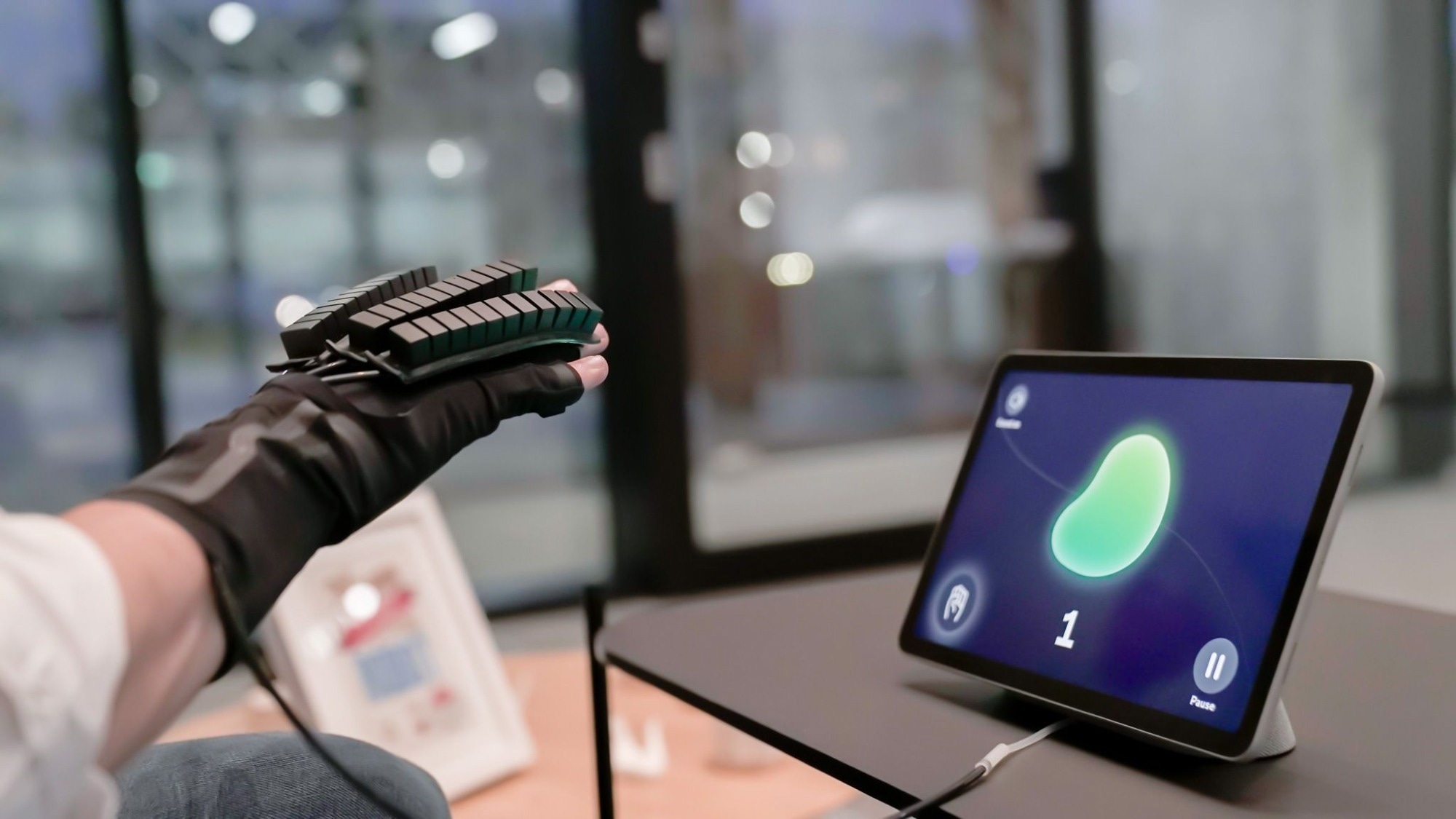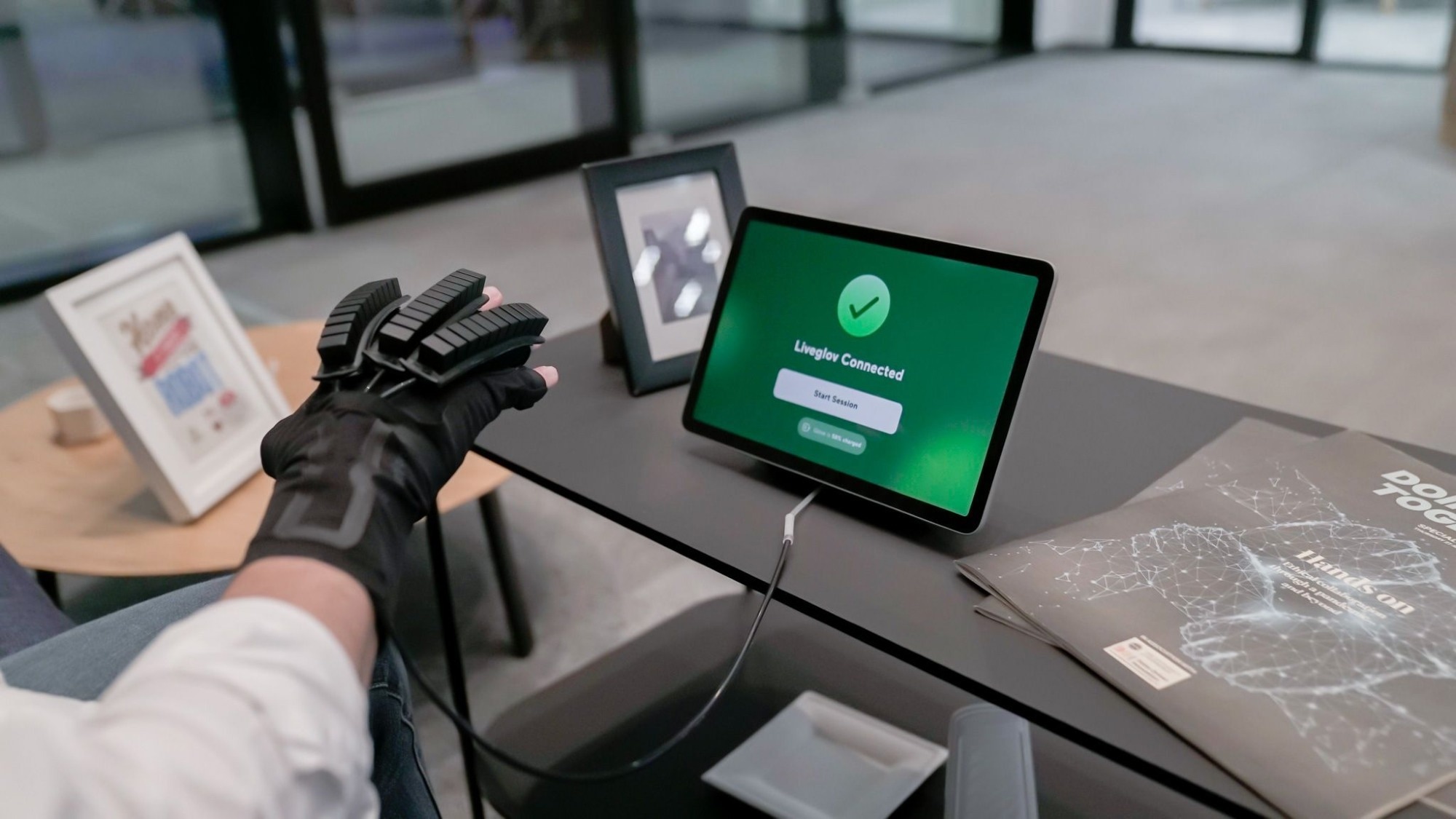In this interview, we talk with Bioliberty, a robotics start-up hoping to revolutionize the field of rehabilitative and assistive technology. Rowan Armstrong, CEO of Bioliberty, shares insights on their groundbreaking soft robotic glove, Lifeglov, designed to enhance the independence and quality of life for those affected by stroke.
Who is Bioliberty?
My name is Rowan Armstrong, CEO of Bioliberty. Bioliberty is a robotics start-up that aims to empower every human to live a longer independent life through assistive and rehabilitative robotics, particularly those affected by stroke.
It was created by four young engineers who came together during a global pandemic to empower people living in social isolation. Witnessing the struggles of living with reduced mobility inspired our ideas.
Why is effective, timely rehabilitation so important for those who have been affected by stroke?
Speedy and targeted rehabilitation helps individuals regain their functional abilities much more quickly. The brain has a remarkable ability to adapt and reorganise itself, known as neuroplasticity.
Timely rehabilitation stimulates neuroplastic changes, allowing the brain to compensate for damaged areas and form new neural connections. This can lead to improved function and recovery of skills affected by the stroke. With the right rehab, the overall well-being and quality of life for stroke survivors can be greatly improved.
How could robotic technologies help healthcare providers offer this support? What efforts has Bioliberty made in this space?
In their recent report, ‘Stroke rehabilitation in adults’, the National Institute for Health and Care Excellence (NICE) suggested stroke survivors should get at least three hours a day, five days a week of rehabilitation. This will put considerable pressure on an already stretched NHS, so robotic solutions like ours, which can be used without carer supervision, could be an extremely timely, cost-saving resource.

Soft Robotic Glove. Image Credit: Bioliberty
Could you explain how the robotic glove works? Were there any major challenges in its development?
Lifeglov employs cutting-edge soft robotics technology for precise force generation and control, ensuring a tailored approach to rehabilitation.
The device features adjustable force levels, allowing for personalised hand rehabilitation that promotes optimal recovery. When coupled with our virtual therapy environment, Lifeglov becomes a versatile tool for stroke survivors at every stage of their rehab journey.
Acting as both a passive and active device, it can either facilitate movement independently or provide assistance to complete specific motions.
In its passive mode, Lifeglov does all the work to help mobilise movement, while in the active mode, it collaborates with the user to help them complete movements. Bioliberty's soft robotics can detect subtle movements, and, through trained AI algorithms, translate these intentions into actions.
As stroke survivors progress through their rehabilitation, the intervention of Bioliberty's soft robots gradually diminishes over time. Advanced AI models work in tandem to train algorithms, enhancing their understanding of the user's needs, which results in a more robust control mechanism.
The major challenge we faced when creating a solution for upper limb stroke rehabilitation has been creating something easy to use. Every stroke affects a person differently and this can be extremely challenging when trying to design a solution for this patient population.
For example, how does a person don a glove if they have no movement in their hand? This is a question we have worked tirelessly to provide an answer to. Yes, we have cutting-edge tech, but the usability of this tech is fundamental to its success. If it is too hard to use, nobody will use it, no matter the evidence, to improve patient outcomes.
Congratulations on securing funding from the Biomedical Catalyst. Could you discuss this grant and how you will utilize the funding?
This new Innovate UK funding will go towards developing the machine learning and data collection elements of the product. This is extremely important for therapists and other clinicians as it can help them monitor the progress of their patients as well as tailor their treatment.
Bioliberty is on the verge of a revolutionary leap in rehabilitation technology.
Our upcoming trials for our soft robotic glove are set to ignite the United States, with top rehab clinics eagerly in discussions.
With this new funding, we are poised to accelerate trials and expedite our market launch. But we're not stopping at the U.S.; the UK is a huge opportunity, with a significant demand for innovative rehabilitation solutions amidst the latest NICE guidelines.
Are there any other exciting products that the company can share some details on?
The prospect of Bioliberty's upcoming portfolio is really exciting. Soft robotics, a key focus for us, exhibits remarkable scalability. The force output of these robots grows exponentially with the expanding area to which they are attached, presenting exciting possibilities.
Yet, Bioliberty’s commitment to innovation extends beyond soft robotics. I firmly believe that various technologies hold the potential to offer valuable rehabilitation experiences for patients who have experienced a debilitating event. Our ongoing developments reflect this holistic approach to advancing rehabilitation solutions.

The Liveglov. Image Credit: Bioliberty
Could you discuss the company’s relationship with the National Robotarium and any benefits you have gained from this relationship?
Having access to the National Robotarium’s state-of-the-art office and lab facilities, including its ecosystem of collaborators, industry experts and academic teams, has been vital in helping us develop our product. Working alongside other innovators and with the support of its business development team, the National Robotarium has allowed us to accelerate our development and put us in touch with people who can help us get our product to market.
What can we expect from Bioliberty and its robotic glove in the near future?
Bioliberty has exciting developments on the horizon. Our primary focus is on the upcoming launch of Lifeglov in the US market, scheduled for the summer.
Before the launch, we are excited to embark on clinical investigations in collaboration with a leading rehabilitation hospital in the US. These research efforts aim to substantiate the effectiveness of Bioliberty’s technology in aiding individuals to achieve a more optimal level of function post-stroke.
As Lifeglov strives to reach more individuals recovering from a stroke, our vision includes scaling operations in the USA. This expansion will enable us to collect substantial evidence of the device's efficacy, laying a strong foundation for a seamless entry into the UK and EU markets.
How do you predict the use of robots in healthcare, such as within rehabilitation, to evolve in the coming years?
There is so much work going on at the National Robotarium and Heriot-Watt University in this field.
The University has created the Health and Care Technologies global research institute to turn cutting-edge research into impactful and practical solutions to make a positive impact on peoples’ lives, the NHS and health and care globally. Robotics clearly has a role to play in the future of health and care and it is exciting to be a part of that future.
In relation to robotics' role in rehabilitation specifically, our experience has been that people often misunderstand the capabilities of robotics. Robotics is a long way from ever being able to replace the role of an occupational or physiotherapist and Bioliberty has no aim to do that.
Instead, we are trying to create robotics which can be used as a tool by therapists to provide patients with a more effective and engaging rehabilitation experience.
Where can our readers go to stay up to date with the company’s activities?
Visit our website to stay up to date with our activities.
About Rowan Armstrong

As CEO, Rowan Armstrong's role is overseeing both the strategic vision and day-to-day operations at Bioliberty. Navigating the intricate landscape of healthcare technology is a daily endeavour for Armstrong, involving the steering of business development initiatives and fostering collaborative partnerships with research institutions and hospitals.
Armstrong's hands-on approach extends to guiding Bioliberty's research and development efforts, ensuring that the company remains at the forefront of delivering effective, user-friendly, and transformative technologies. Beyond the boardroom, Armstrong actively immerses in steering clinical investigations and business strategy, ensuring the seamless execution of the company's vision.
One standout career highlight for Armstrong is undoubtedly the successful execution of Bioliberty’s £2.35M seed investment round. This achievement marked a turning point, facilitating the growth of the team from 4 to 14 in just 6 months. Every day brings its own successes, but working with such a talented group of people always makes Armstrong proud and fulfilled.
Disclaimer: The views expressed here are those of the interviewee and do not necessarily represent the views of AZoM.com Limited (T/A) AZoNetwork, the owner and operator of this website. This disclaimer forms part of the Terms and Conditions of use of this website.